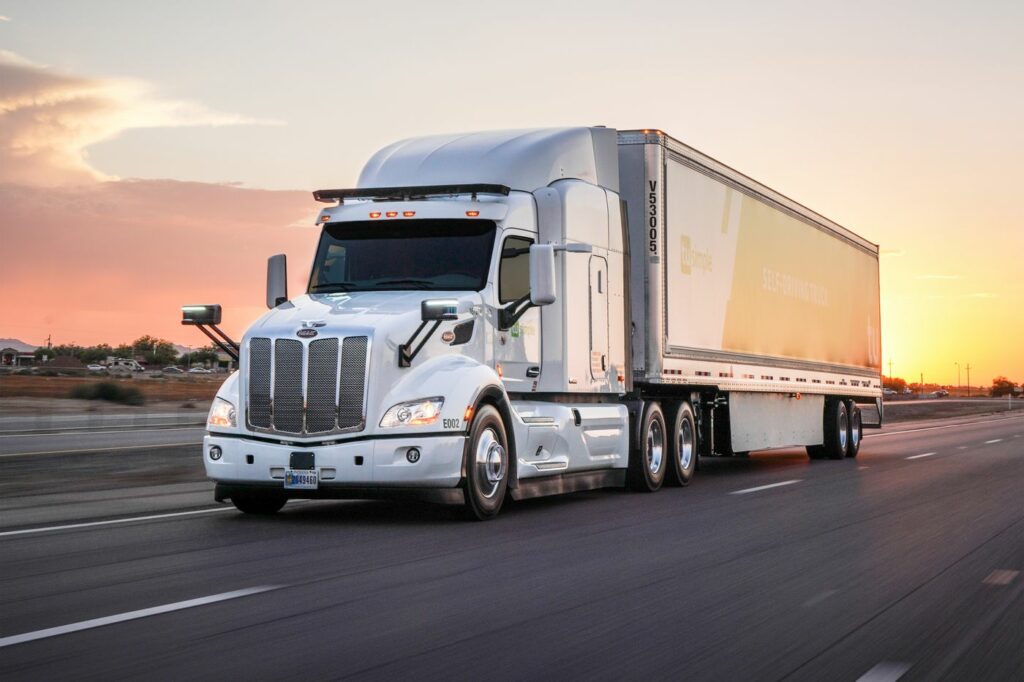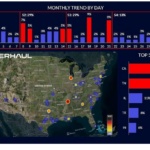These best practices ensure fleet health and safety compliance with state and federal regulations while also ensuring optimal outcomes for your fleet’s operations.
- Fleet health and safety compliance includes regulations about hours of truck driver service, the use of electronic logging devices, types of vehicles, and other elements central to transportation businesses.
- Compliance with these regulations is measured with compliance, safety and accountability scores.
- Company policy and workplace culture can contribute to fleetwide safety and better health outcomes for drivers.
Fleet companies must stay up to date on legislation that affects how they do business. They should also take active steps to manage and improve the safety of their commercial vehicles and drivers. Not only is compliance with regulations critical to avoiding fines and lawsuits, but businesses operate more efficiently when their assets and workers remain safe and healthy. This guide includes best practices on how to keep your operations compliant and safe.
What laws do you need to comply with for fleet health and safety?
The Occupational Safety and Health Act (OSHA) provides legislative protections to ensure that all employed individuals have safe and healthy working conditions. OSHA rules and regulations do not apply when another federal agency exercises its own rules and regulations for specific working conditions. For example, the U.S. Department of Transportation (DOT) has created several federal regulations that govern employee health and safety in transportation. This includes regulating the safety of commercial motor vehicles.
The Federal Motor Carrier Safety Administration (FMCSA), an agency within the DOT, regulates commercial vehicle operators. The agency issues rules and regulations that fleet managers and drivers must follow to maintain safety on roadways and reduce vehicular accidents. Different operators of commercial vehicles follow different sets of rules that depend on various factors, including types of vehicles used, materials transported and distance driven.
Hours of service
The FMCSA developed hours of service (HOS) rules to monitor commercial drivers’ working hours. It sets the maximum number of consecutive hours that a commercial vehicle operator can drive or work before they must take a rest break. HOS rules are designed to prevent vehicular accidents resulting from driver fatigue. Violations of HOS rules can result in fines and probationary periods for the carrier, and affect their safety rating.
Commercial vehicle operators must also use an electronic logging device (ELD) to track their HOS, as spelled out in the ELD mandate. These devices (also known as electronic logbooks) connect to the commercial vehicle’s engine to automatically record driving time. The device provides a reliable method of collecting HOS data.
Compliance, safety and accountability scores
The FMCSA manages the Compliance, Safety, Accountability (CSA) program, which identifies commercial operators that have safety concerns involving their drivers or vehicles. The goal of the CSA program is to identify carriers that require some form of mediation to improve road safety.
FMCSA uses the program to score, rank and group commercial operators based on how many safety events they’ve had over a given time period. It then uses roadside inspections to gather data on the commercial operators and updates their safety rankings in its Safety Measurement System.
The FMCSA uses the Safety Measurement System to organize and rank data according to seven Behaviour Analysis and Safety Improvement Categories (BASICs):
- Crash indicator: Patterns of vehicular accidents, including frequency and severity
- Controlled substances/alcohol: Instances when a driver was caught operating a commercial vehicle while under the influence of alcohol or illegal drugs
- Driver fitness: Recorded incidents when a driver did not have a valid CDL or medical card or is otherwise unqualified to drive
- Hazardous materials compliance: Cases where commercial operators did not handle, label or transport hazardous materials according to regulations
- HOS compliance: Instances when drivers did not maintain records of duty status, according to regulations, or exceeded HOS driving requirements
- Unsafe driving: Times when drivers failed to wear a seatbelt, drove at unsafe speeds or engaged in other unsafe driving behavior like hard braking
- Vehicle maintenance: Documented instances of the commercial operator’s failures to secure loads; repair faulty brakes, lights, and other systems; or reduce maintenance costs
Commercial operators receive a CSA score for each category, calculated from 0 to 100 on a percentile scale (0 is the best score). The FMCSA sets specific intervention thresholds for each category to identify high-risk commercial operators and determine when to assign investigators.
Best practices on maintaining your fleet’s health and safety
In addition to adhering to rules and regulations for commercial vehicle operators, fleet owners should implement a few best practices to help protect drivers’ health and safety.
Identify potential risks.
Fleet owners and their drivers face an assortment of risks and hazards. Some issues apply to all types of commercial vehicle drivers, while others apply to specific industries and drivers. Some risks include dealing with drivers who are either untrained or have incorrect vehicle licenses, those who drive long distances or over varied terrains, drivers operating fit-for-purpose vehicles and safety ratings. Fleet companies must assess a driver’s particular level of exposure and create a plan to ensure they have the correct systems and resources in place.
Implement a fleet safety policy.
A fleet safety policy helps drivers understand the fleet owner’s expectations and enables the employer to spell out health and safety requirements. The policy should focus on the importance of driver safety over everything else (e.g., fatigue awareness training, restrictions on night driving). A fleet safety policy should also include the following:
- Communication of safety messages
- Safe driving pledges
- License checks
- Regular vehicle maintenance
- Driver risk assessments
- Driver training
- Incident reporting
A fleet safety policy helps engage stakeholder support in enforcing company safety protocols. When management is committed to fleet safety, and field managers manage road safety, fleet owners generally have greater overall success in maintaining driver health and safety. Once a fleet safety policy is created and put into writing, management should ensure it is communicated consistently across all programs and in different ways (i.e., in person and digitally) for greater accessibility and understanding.
Create a driver training program.
Truck driving is one of the most dangerous jobs in the United States. Implementing a safety training program can help protect drivers against crashes, as it minimizes the probability of accidents caused by careless driving and dangerous driving practices. It can also protect the carrier from financial and legal liabilities arising from commercial vehicle accidents.
A driver training program should be part of the organization’s recruitment process and apply to new and current drivers. It should encourage safe driving behaviors, maintenance of vehicles, and technology that monitors driver performance.
Establish an accident review group.
Accidents will happen from time to time. Fleet managers should prepare for these circumstances. Set up an accident review group with procedures for evaluating what occurred and to prevent future occurrences. Review each accident to determine where the responsibility lies and if the company is liable for fines or penalties, as well as to determine if the driver made an error. Provide feedback through post-accident training, and set up a risk management program to help the driver prevent future similar events.
Use technology to monitor driver performance.
Fleet companies can use different technologies to help monitor and improve driver safety. One solution is to install GPS-enabled fleet management software, which can help improve fleet efficiency and streamline overall efficiency. It can promote safer driving by recording events that help drivers manage their performance while they are on the road, it can identify signs of aggressive or bad behavior, and it can note traffic violations. It can also help protect driver health by ensuring vehicles are regularly inspected and maintained.
In-cab video dash cams can provide another layer of security, whether or not they are integrated with fleet management software. It can alert drivers when they are demonstrating poor driving behavior. Companies can use the footage in training programs to demonstrate good and bad driving practices.
Encourage safe behaviors.
Negative reinforcement measures, such as firing employees, is not the most effective method of protecting driver health and safety. Providing drivers with encouragement and support – and adding more positive and fun elements to health and safety programs – can produce more positive results. Fleet owners can provide incentives (e.g., travel bonuses, merchandise) to reward successful participation and completion of safety programs.
Assess the effectiveness of your safety program.
Regularly monitor and evaluate the effectiveness of your driver safety training program. Determine whether drivers are putting what they learned into practice when driving. Identify what they are not doing, or what they are doing poorly, and the reasons why this is happening. Provide drivers with help after training where requested. Ask drivers for feedback on what needs to be supported or changed, and, finally, assess the metrics being used to measure employee health and safety.
Source: www.businessnewsdaily.com





